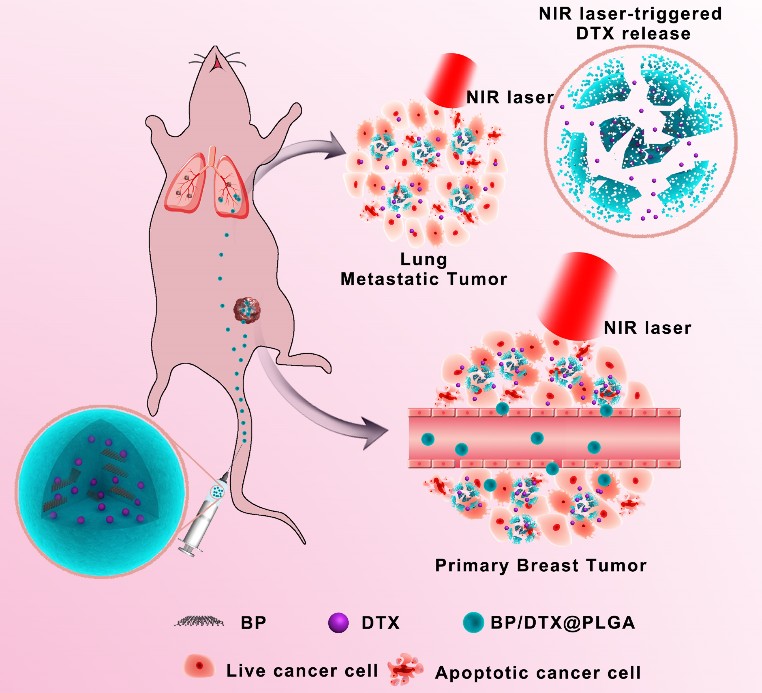Black Phosphorus-Based Multimodal Nanoagent: Showing Targeted Combinatory Therapeutics against Cancer Metastasis
Date:24-10-2019 | 【Print】 【close】
Although nanomedicine has emerged as a prudent ploy in cancer treatment, quite a few obstacles and limitations should be conquered for nano-agents still, such as selective tumor targeting, therapeutics for metastasis and bio-compatibility. Moreover, the fact that no specific strategies are available to repress breast cancer metastasis, thus far greatly hampers the development of anti-metastatic therapeutics.
Prof. Yu Xuefeng at the Shenzhen Institutes of Advanced Technology (SIAT) of the Chinese Academy of Sciences and Prof. LIU Sijin at Research Center for Eco-Environmental Sciences, Chinese Academy of Sciences developed a BP/DTX@PLGA nanocomplex for addressing these challenges.
In this study, BP/DTX@PLGA nanocomposite, i.e. BP quantum dots (BPQDs) loaded into poly (lactic-co-glycolic acid) (PLGA) with additional conjugation of chemotherapeutic agent docetaxel (DTX), strikingly shows pronounced tropism to target both primary tumors and lung metastatic tumors, through which chemo-photothermal combinatory therapeutics is triggered to synergistically eliminate metastatic tumors in the lung by near-infrared (NIR) laser radiation.
All in all, these findings unearthed the BP-based controllable synergistic effects between photothermal toxicity and chemo-toxicity for precision targeting at lung metastatic tumors. And this work would open a new avenue to look for easy and safe therapeutics in the treatment of metastases.
The team has been working on synthesis and applications of BP-based nanomaterials for years. In particular, many achievements have been made in biomedical, catalysis and electronic device applications. The current study published in Nano Letters is another key milestone in their systematic work.

BP/DTX@PLGA against primary tumors and lung metastases.(Image by Prof. YU)
CONTACT:
ZHANG Xiaomin
Email: xm.zhang@siat.ac.cn
Tel: 86-755-86585299